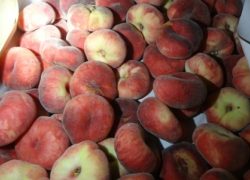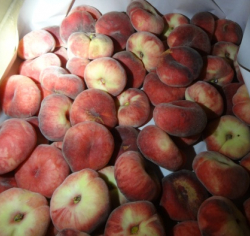Since the beginning of the year, officials of the Office of the Rosselkhoznadzor for the Omsk Region, when conducting phytosanitary control in relation to batches of regulated fruits and vegetables of imported origin, in 21 cases, identified 5 types of quarantine objects (dodder, creeping mustard, oriental codling moth, South American tomato moth, tomato brown wrinkle virus).
These plants, pests and diseases are included in the “Unified List of Quarantine Objects of the Eurasian Economic Union”, the quarantine status of objects is confirmed by the conclusions of the examination of the Federal State Budgetary Institution “Omsk Reference Center of Rosselkhoznadzor”.
The total volume of plant products contaminated (contaminated) with quarantine objects amounted to more than 220 tons.
For example, tomato brown wrinkle virus has been found in tomatoes and peppers (China, Uzbekistan); eastern codling moth – in nectarines, peaches and apricots (Uzbekistan, Kyrgyzstan); South American tomato moth – in tomatoes (Kazakhstan); creeping mustard – in a litter under watermelons (Kazakhstan); dodder – in carrots, cabbage and peppers (Kyrgyzstan, Kazakhstan).
To prevent the spread of harmful objects in the territory of the Omsk region that negatively affect the ecosystem and the economy of the region, officials of the territorial department of Rosselkhoznadzor have taken the following measures in relation to clogged (infected) batches of products:
- 6 batches of products weighing more than 90 tons were returned to exporting countries;
- 7 batches weighing more than 44 tons were subjected to fumigation and, after a second examination, were allowed to be sold;
- 3 shipments weighing more than 1.7 tons were destroyed by incineration;
- in 5 batches of products, the infected part (tops, bedding) was destroyed by burning.
In total, since the beginning of the year, specialists of the regional Rosselkhoznadzor, when entering the territory of the Omsk region, have controlled 5.6 thousand tons of plant products from China and Uzbekistan, which is 13.5 times higher than the figures for the same period in 2021. Upon receipt from the EAEU countries (Kazakhstan, Kyrgyzstan), 42.7 thousand tons of products were controlled, which is 1.6 times less than the volume for the same period last year.
































